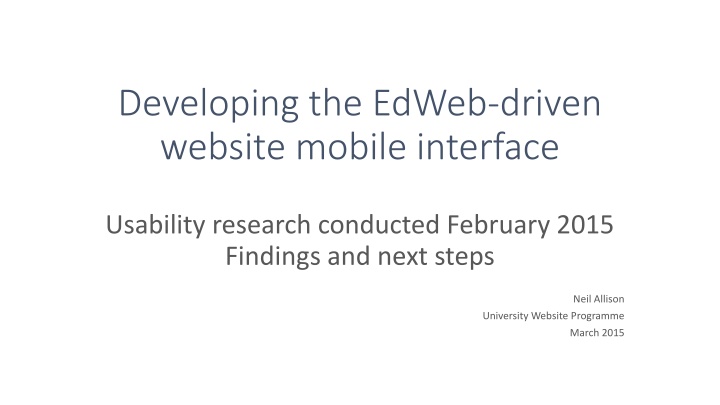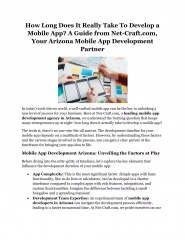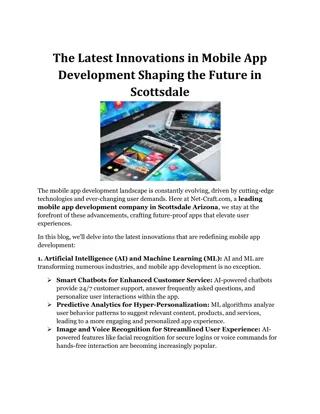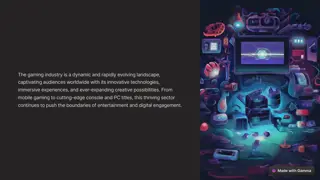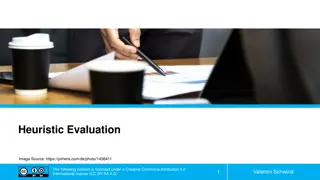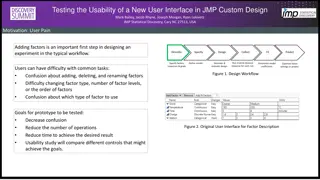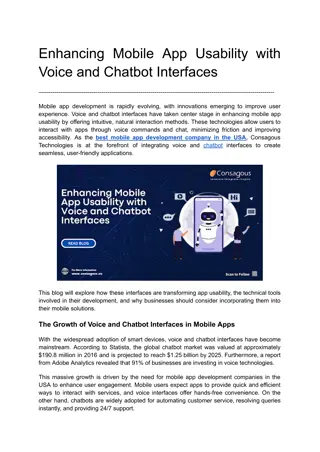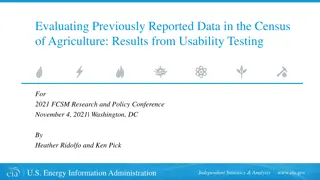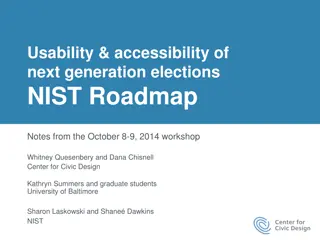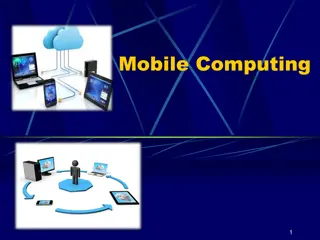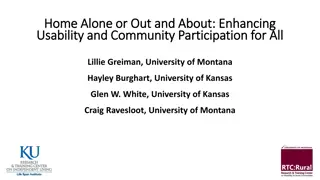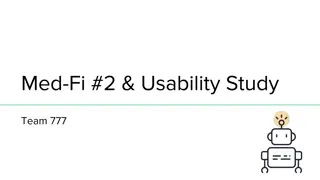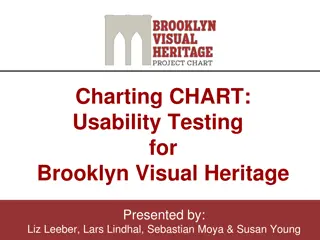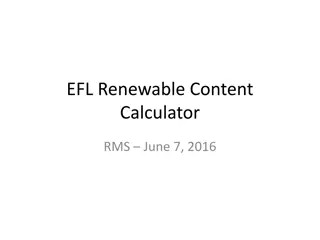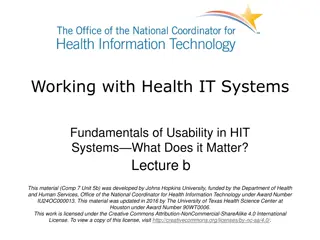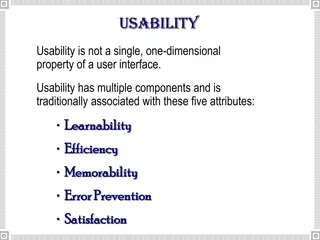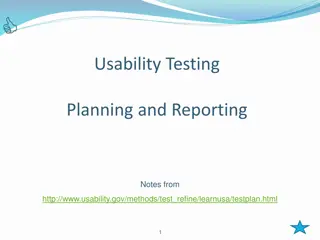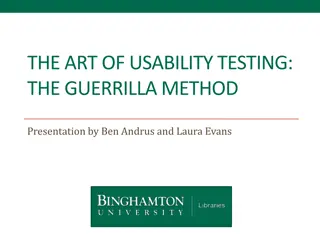Usability Research on Developing EdWeb-driven Website Mobile Interface
In February 2015, a usability research project was conducted on the mobile interface of an EdWeb-driven website, focusing on navigation, user engagement, and design alternatives. Findings highlighted the importance of clear hierarchy, location identification, and ease of completing tasks for prospective postgraduate engagement. The study also explored enhancements for mobile views, testing different versions and evaluating user preferences to improve overall user experience.
Download Presentation

Please find below an Image/Link to download the presentation.
The content on the website is provided AS IS for your information and personal use only. It may not be sold, licensed, or shared on other websites without obtaining consent from the author.If you encounter any issues during the download, it is possible that the publisher has removed the file from their server.
You are allowed to download the files provided on this website for personal or commercial use, subject to the condition that they are used lawfully. All files are the property of their respective owners.
The content on the website is provided AS IS for your information and personal use only. It may not be sold, licensed, or shared on other websites without obtaining consent from the author.
E N D
Presentation Transcript
Developing the EdWeb-driven website mobile interface Usability research conducted February 2015 Findings and next steps Neil Allison University Website Programme March 2015
Background In late 2014, collaboration and discussion began around enhancements to website presentation at smallest viewports Neil Allison (University Website Programme - LTW) Steven Ross (Communications & Marketing) Paul Johnson & Martin Morrey (Web Graphics & Interaction LTW) Discussed a range of concepts, leading to a subset being developed on an EdWeb distribution test site using real content We focused on issues that could be most quickly addressed
Methodology Testing on a mobile phone over two days: 12 members of staff 14 current students Four tasks critical to prospective postgraduate engagement with an MSc website, requiring: Identification of location at deeper levels Navigation up and down the IA Finding contact details
Overarching enhancements for mobile view New stacked logo Search & School & departments link hidden behind icon Relocate subsite navigation dropdown Reduced banner size Reduced padding for local banner
Focus for testing Looking specifically at 3 design alternatives for the location of breadcrumbs and Contact us button Which did participants find easiest to complete priority tasks? Which provided best orientational clues? Which best facilitated interaction with content?
Versions tested Version A Breadcrumbs and Contact us button at foot of page Version B Breadcrumbs and Contact us button below local banner Version C Contact us button only, at the top
Key findings - navigation The navigation menu was not recognised as section navigation. Placement and styling led it to be overlooked This was not the case in testing last year (in current live website location) The navigation menu did not clearly convey the site hierarchy or the user s location. The breadcrumbs were used as main navigation. Moving to the foot of page prompted lots of scrolling Removal significantly impaired task completion, although absence prompted more interaction with the navigation menu Majority preferred to see it, with no issues observed around size/ tappability
Key findings contact button The Contact us button was easy to find whether it was placed at the top or the bottom. Marginally easier when at top Overlooked most frequently when there were no breadcrumbs Some scrolled to bottom anyway as expected details in the footer Additional analytics show that finding contact details is consistently a top task When looking at mobile devices and external audiences only, more so
Key findings interaction with content Regardless of the version presented, almost all participants scrolled to interact with the content first before considering navigational and orientational elements. Image size in portrait orientation was not considered to be too big, with some commenting positively about them breaking up the page There was a definite feel that the images in landscape format were too big. Images higher up the hierarchy were felt appropriate but at deeper levels less so where focus was on content Some minor confusion about tappability of overview page boxes when images were not present
General feedback Site appearance was very well received Considered modern, well suited to a mobile, fresh and clear Links presentation in content flow were commented on positively as being easy to see The main links which were in red text were sometimes a little confusing Quantity of text did not overwhelm, even when presenting a page with a lot of text initially. It was often commented on positively; easy to scan with the headings and links easy to read. Homepage consistency confused a significant number. Where the panels in the homepage did not replicate the content of the navigation bar
Conclusions & next steps More work needed around presentation of navigation We want the navigation menu to work harder so visitors don t need breadcrumbs Location of local navigation, breadcrumbs and Contact us button need to stay as is for now Location and presentation of Contact us needs reviewing in the context of the introduction of a subsite footer IA and content management guidance needs strengthening to emphasise the important of calls to action within the body of the page
Thank you Questions?
